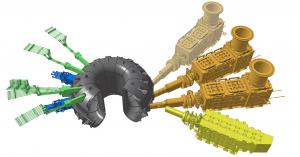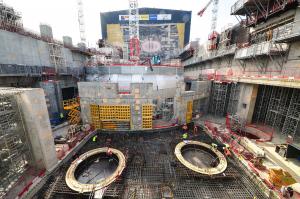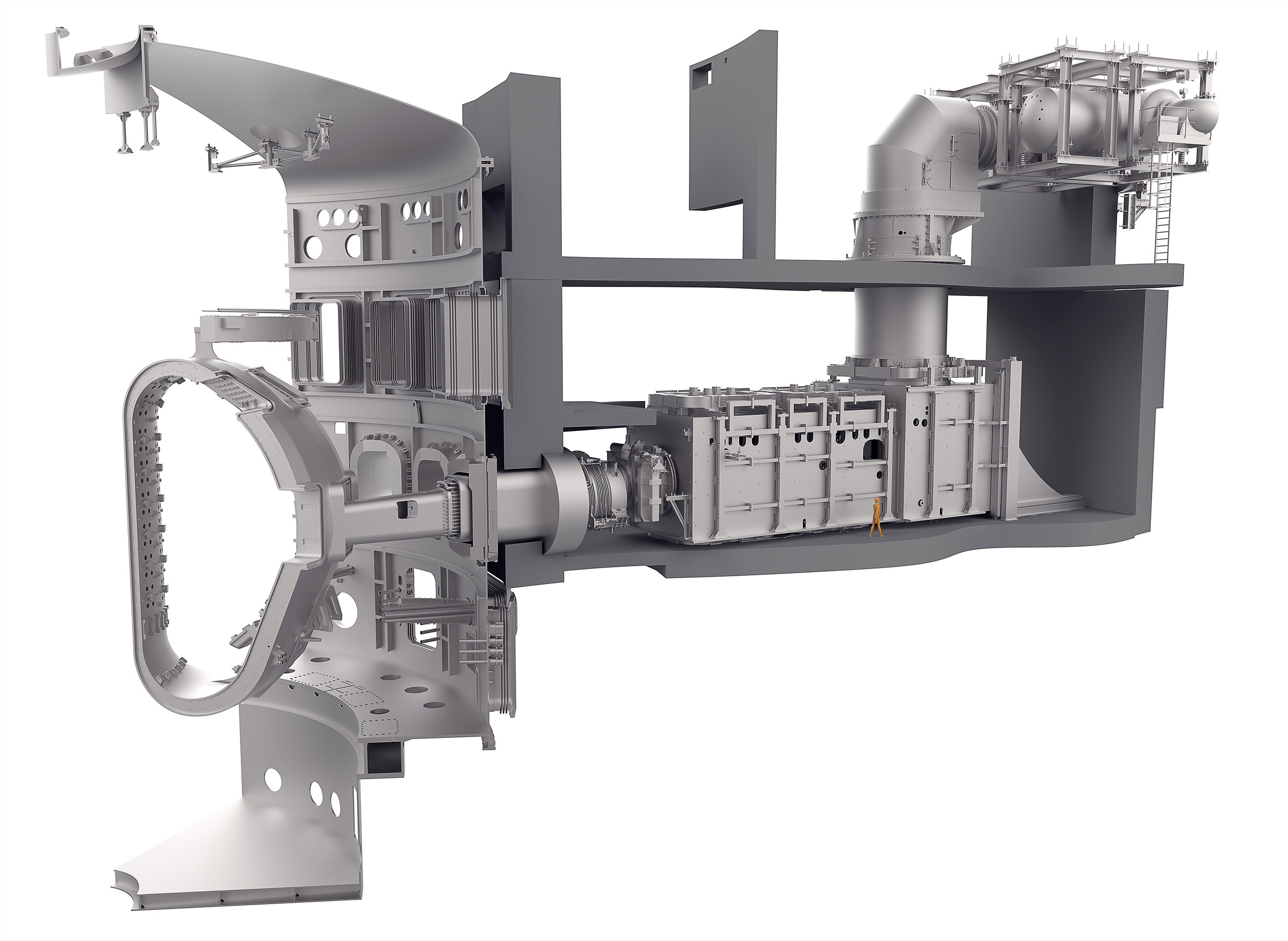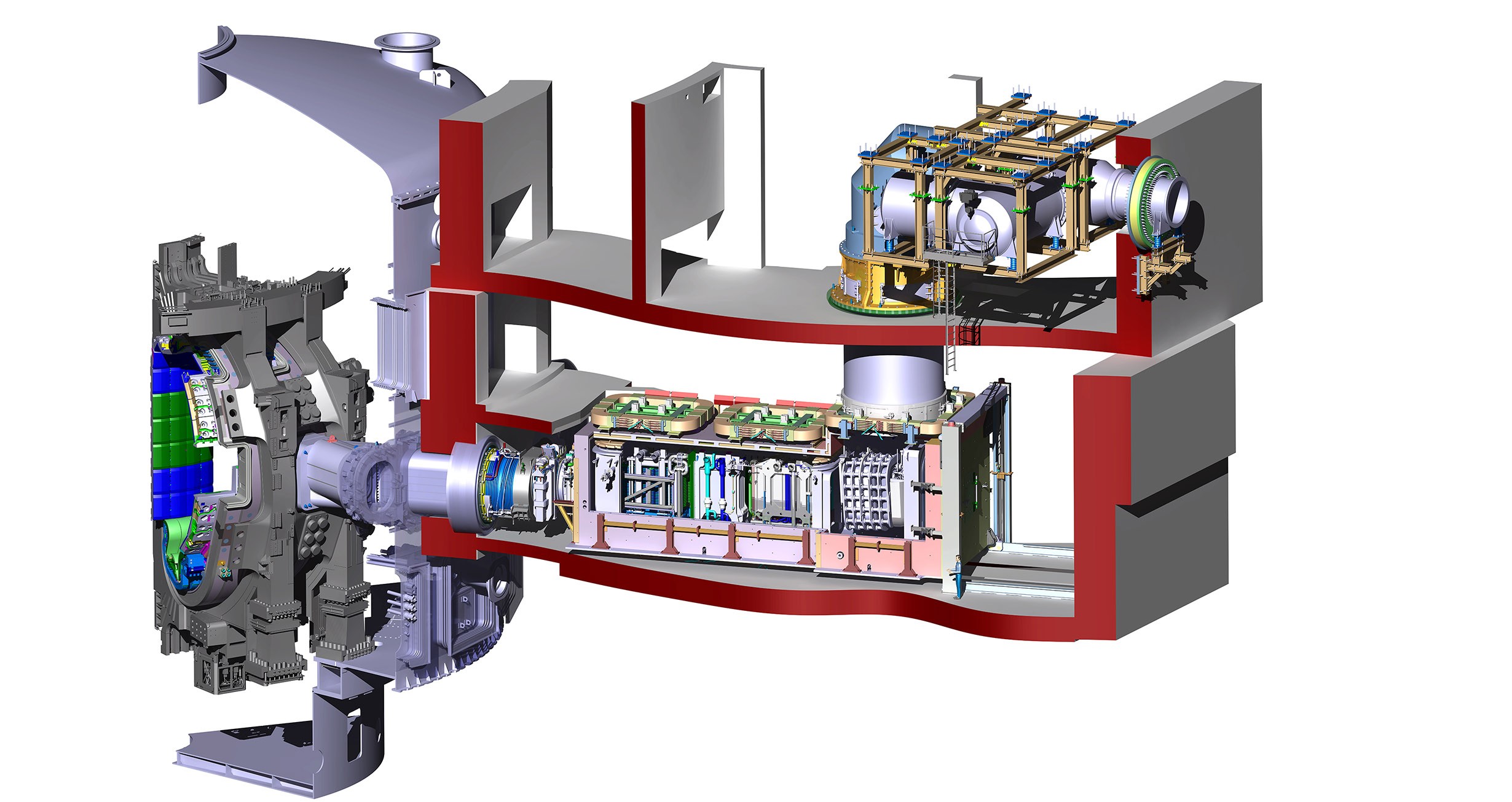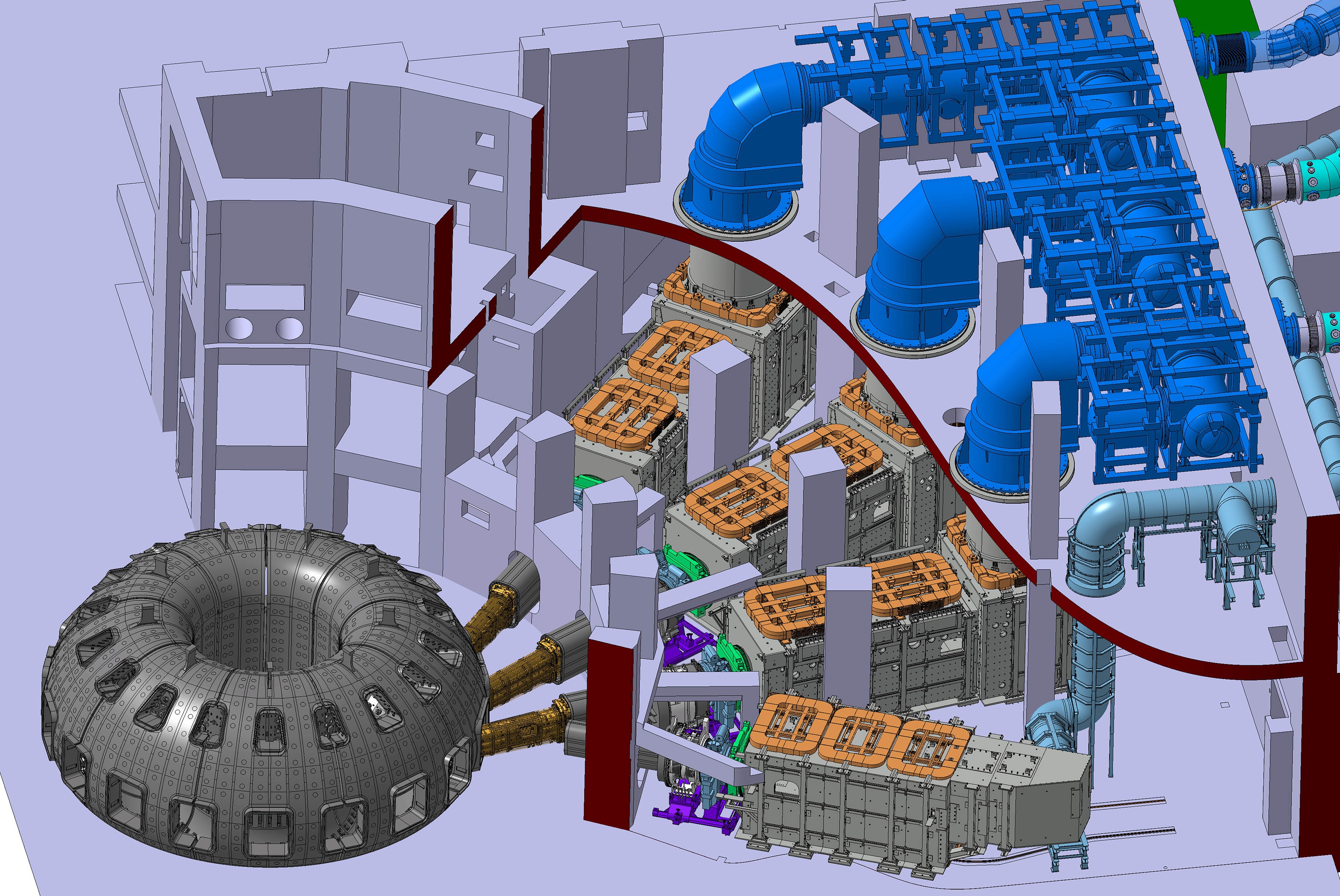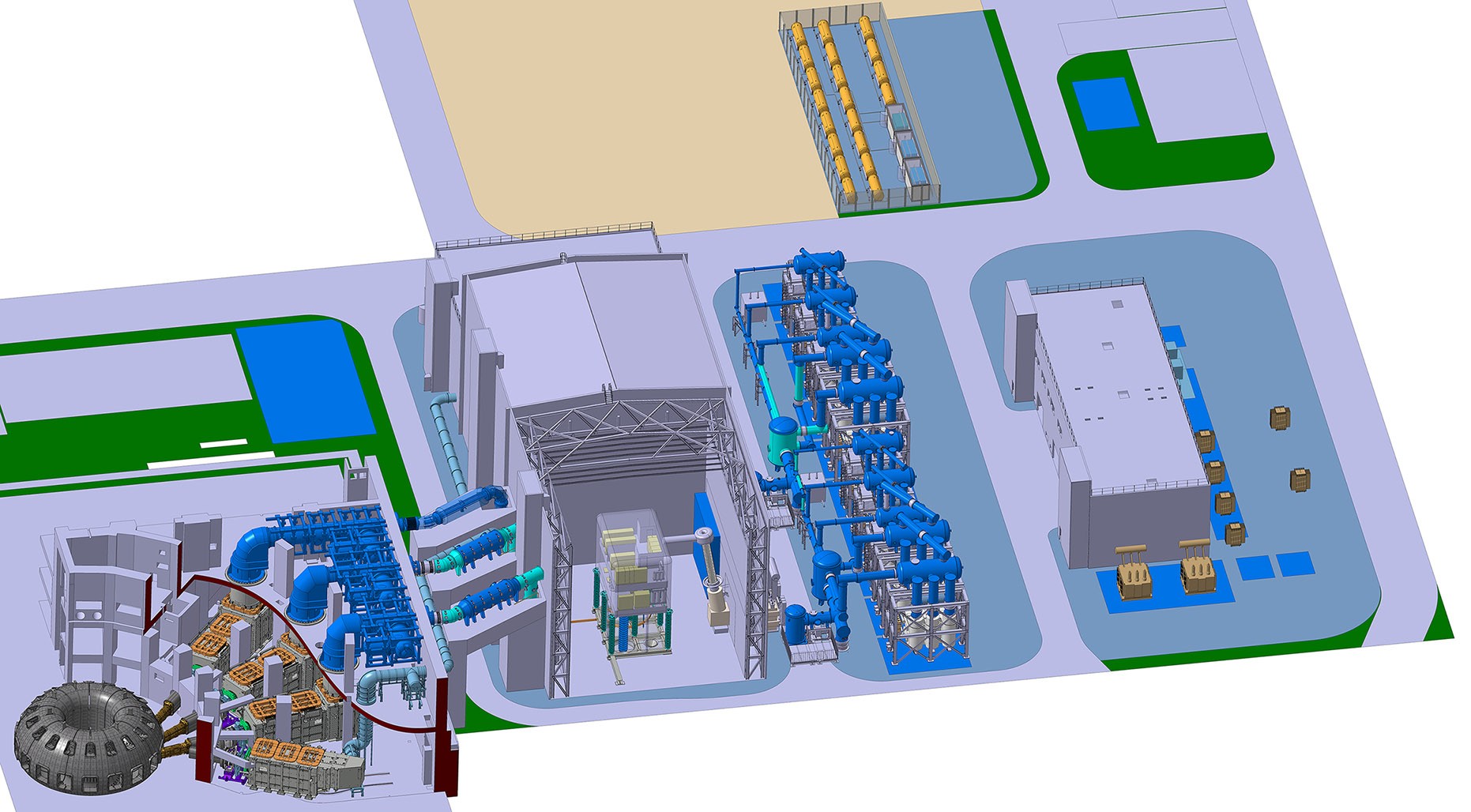The heating neutral beam injectors will each contribute 16.5 MW of heating power to the plasma; the diagnostics neutral beam will provide information on the helium ash density produced by the D-T fusion reactions in the fusion plasma.
At the entry end of the heating neutral beam, a beam source generates the electrically charged deuterium ions that are accelerated through a succession of five grids (each separated by a 200 kV electrical potential) to the required energy of 1 MV at the exit end of the beam source, a "neutralizer" rips them of their electrical charges to become "neutrals," allowing them to penetrate the Tokamak's magnetic cage and, by way of multiple collisions with the particles inside the plasma, raise plasma temperature to the point where fusion reactions can occur. The heating neutral beams are designed to be able to operate during the entire plasma duration, up to 3,600 seconds.
Neutral beams are routinely used in tokamak devices as the workhorses of auxiliary heating. In ITER however they will be considerably larger and more powerful than in any previous fusion device.
Generating a 1 MV beam that will deliver 16.5 MW to the plasma requires a unique power infrastructure. Located just outside the Tokamak Complex, two large buildings will host the transformers, the AC/DC converters and the vast high-voltage hall that will feed power to the neutral beam system by way of transmission lines entering the Tokamak Building
through the "north wall" at the L3 level.
There is only one example of a high-voltage installation more powerful than ITER's. In China, where high-voltage DC current is used to deliver electrical power to populations far away from the productions sites, a 1.2 MV system was
recently established to push power from Xinjiang, in the northeast corner of the country, to the megacities in the east—1.2 MV in China for a 3,000-kilometre distance; 1 MV in ITER for slightly more than one hundred metres ...

